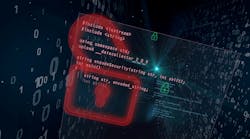This article is part of our 2023 Electronic Design Technology Forecast issue and TechXchange: Cybersecurity.
What you'll learn:
- Cybersecurity issues we face this year.
- What steps are expected to be taken to harden security?
The geopolitical climate shifted dramatically in 2022, with the Russian invasion of Ukraine taking place in February. While Russia seemed to expect a quick takeover of Ukraine, their actions turned into an extended war that also galvanized European nations and caused the U.S. to evaluate its foreign policy while supplying material to Ukraine.
Another outcome of the conflict has turned a spotlight to the always complex U.S.-China relationship, especially the China-Taiwan connection. We’re asking more loudly and frequently about the role of China in our supply chains given increased tensions.
Now add in the erratic economic climate of 2022 with its continued supply chain and inflationary pressures taking their toll on many businesses’ once-predictable ability to offer a reliable outlook on their results/revenue/delivery to customers.
2022 is only partially in our rearview mirror since these events will continue to influence the coming year. What can we expect?
Security breaches will continue.
It’s not a stretch to say that there will be a headline-making security breach in 2023. (Several occurred in 2022, including successful breaches at household names Microsoft, Red Cross, as well as Costa Rica’s national health service, to name a few.) There also will be many attacks that we never hear about because they will be thwarted.
In the spirit of knowing that breaches will happen, we know that state-sponsored attacks will be with us, too. Defense departments, intelligence agencies, and government ministries around the world are focused on furthering their offensive and defensive cyber capabilities.
An increased attack surface is here to stay.
Spurred by the onset of the COVID-19 pandemic, the number of people working from home tripled from 2019 to 2021 to 27.6 million, or nearly 18% of the U.S. workforce, according to the U.S. Census Bureau. While some workers are returning to their offices, the work from home phenomenon looks to be here to stay.
Deploying remote workers put a new strain on IT and cybersecurity resources: The first reaction to suddenly having millions of new remote workers (and students) was to procure computers, enable video conferencing, set up productivity tools, and provide access to mission-critical applications and data.
Security Measures
Data security was often overlooked in the rush to keep workers productive—even for companies and government agencies with sensitive data. Organizations will start to catch up in 2023.
IT departments are now better prepared to make sure company computers have self-encrypting storage devices with secure authentication methods, including multi-factor authentication. When it’s time to provision new workers with computers or go through a refresh cycle, encrypting data and securing access will be commonplace.
Zero trust will continue to gain traction.
Today, authenticated identity matters more than physical location or secure perimeter defenses. The implications for an enterprise implementation are many—and the task of rearchitecting away from VPNs isn’t easy.
However, the simpler it is to include security features for laptops and other user devices, such as pre-boot authentication (PBA) for securing data at rest, in a zero-trust environment, the wider the protection of access to devices, networks, and data becomes.
Government mandates will gain further traction in 2023.
The 2021 executive order to improve the nation’s cybersecurity contained language to protect data at rest and in transit. And in 2022, the U.S. Office of Management and Budget put a zero-trust architecture (ZTA) strategy into motion. It takes time for agencies and enterprises—let alone individuals—to understand the implications, seek security gaps, develop the architecture, and then implement data-security solutions.
Machine learning and artificial intelligence.
ML and AI will be more widely used to address cybersecurity—as well as to craft new attacks. While not necessarily visible to all of us in everyday life, ML and AI tools are increasingly available and more sophisticated.
Security is a budget priority.
Despite an uncertain economy that may have an impact on technology acquisitions and deployment, cybersecurity spend, while not entirely recession-proof, is certainly recession-resistant. That’s because the very existence of an organization can come into question without adequate defenses. In other words, programs and processes aimed at securing data and applications will be shielded from the budget axe and in many cases, will increase.
Read more articles in our 2023 Electronic Design Technology Forecast issue and TechXchange: Cybersecurity.
